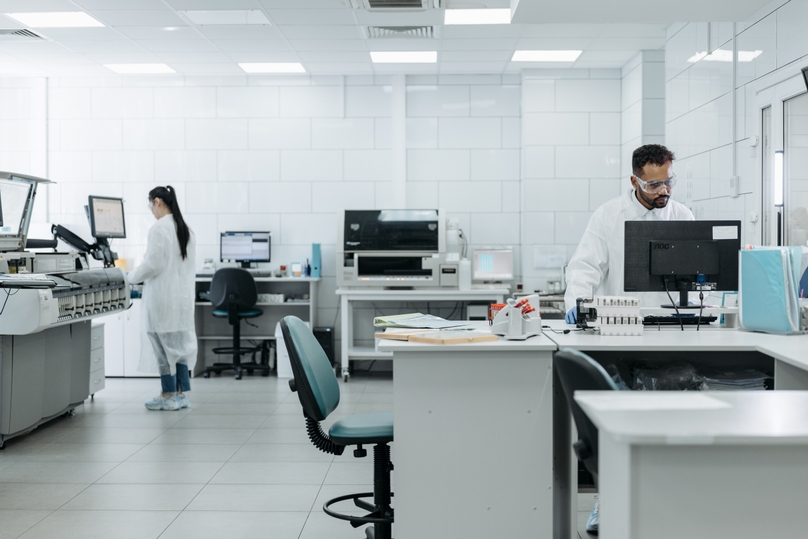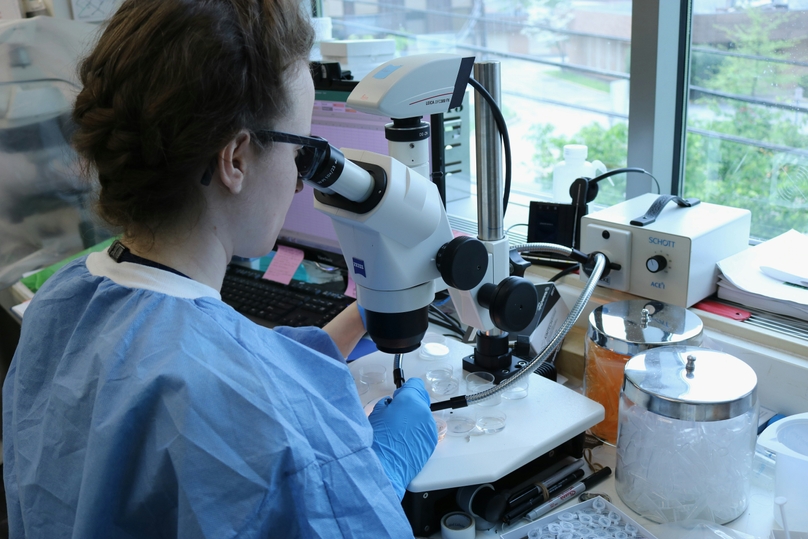The History of Lab Automation
Laboratory automation in Life Sciences is not new. You may be surprised to find that it dates back to the 1950s. Its initial implementation in 1957 was an instrument known as the Autoanalyzer I. The device used continuous flow analysis for routine medical lab analysis, replacing the manual processes of the time.
By the 1970s, laboratory information management systems (LIMS) were being implemented. With their electronic data management systems, the LIMS platforms increased the accuracy of processes such as medical coding, billing, and data storage. They helped make lab operations more efficient by electronically capturing experimental data from lab sources, thus eliminating paper-based records.
Today, the next generation of lab automation has become the norm, with companies such as Genemod developing new technologies for all aspects of lab management. Whether your field is drug discovery, microbiology, chromatography, or healthcare or whether you’re using sample preparation, HPLC, or spectroscopy, lab automation can boost your productivity. Furthermore, lab automation software has a great return on investment.
In this article, we will review the main benefits of lab automation and how to best implement it.
How Lab Automation is Revolutionizing Productivity
It’s a certainty that laboratory automation significantly increases productivity by eliminating repetitious manual processes that are time-consuming and prone to error. By implementing a LIMS, data is gathered, shared, and stored more accurately and efficiently. It also reduces the risk of human error by replacing written information with electronic data input and eliminates data loss with electronic storage. Lab automation also has other benefits.
Increased Efficiency
Maximizing efficiency in the lab is an important factor in saving time and money. Lab automation allows lab teams to complete even tedious tasks at a much faster rate. It also improves efficiency in the following ways:
- Facilitating collaboration: Lab automation makes collaboration a breeze because test results can be shared in real-time wherever your lab members are.
- Data presentation: Manual data capture can be prone to error. Automation eliminates this while allowing data to be presented in an easily digestible format.
- Reproducible results: Because LIMS software enables lab teams to control multiple parameters with a single program, tests and experiments are more reproducible.
- Improving throughput: Laboratory automation allows for an increase in the amount of data passing through the system so a higher volume of samples can be analyzed with a faster turnaround.
Improved Safety Measures
A laboratory poses a number of potential risks from exposure to chemical substances and risk of injury from lab equipment. Lab automation may not be the only way to improve safety within the laboratory, but it plays an important role. Here’s how:
- Safety planning: Automation software makes it easy for lab managers to update and share emergency action plans and the locations of first aid and safety features within the lab.
- Identifying CCPs: Critical control points (CCPs) are steps at which point hazards can be prevented. Lab automation allows lab managers to quickly identify CCPs and define and manage preventive measures.
- Verify system functions: Implementing a LIMS allows lab managers to ensure that all systems are working properly and safely.
More Accurate Results
Streamlining workflows with lab automation is a surefire way to produce more accurate results. This is particularly true in laboratories that implement a combination of LIMS, electronic notebooks, inventory management software, and protocol template libraries. Automation helps produce accurate results in the following ways:
- Validating data: LIMS allows for the validation of results at multiple levels. The software easily identifies which data needs to be validated and why. It also highlights the right team member to validate the results. This ensures precision and timely results.
- Eliminating errors: Because lab automation involves electronic data input and transfer, it ensures fewer errors than manual reporting. This improves the reliability of all data.
- Improving pre-analytical processes: Errors at the pre-analytical stage (the steps from reagent/sample storage to preparation) are reported as high as 70% due to poor storage, mislabeling, and incorrect volumes. Lab automation can dramatically reduce errors at the pre-analytic stage.
Repeatable Processes
Automation systems streamline lab processes and enable processes to be repeated without the constant need to check and recheck results. Furthermore, other processes can be completed using the same or similar automation, such as assays or reagent testing. This has the following advantages:
- Allowing more efficient use of limited resources
- Reducing unwanted variables
- Improved project management
- Reducing the pressure on repetitive tasks
- Processes can be repeated by different research teams
- Facilitating communication and building trust
Standardized Workflows
A standardized workflow ensures that every lab team member knows exactly what their assignments are. They know what to do and the order in which to do it. Because any ambiguity is eliminated, downtime and delays are minimized. Other advantages include:
- Guaranteed quality: High quality is assured in all aspects, from testing to diagnostics.
- Increased clarity: The need for guesswork is eliminated.
- Improved productivity: Lab techs have all the information at hand.
Best Steps to Improving Productivity with Lab Automation
Lab automation solutions offer plenty of ways to improve productivity. Automation software provides a multifaceted strategy for research, development, and expansion. It also allows your team to do more in the same amount of time. Here are some other areas where lab automation can be implemented to increase productivity.
Plan Each Day
Planning each day in the lab is important for maximizing efficiency and productivity. Spending time at the beginning of each day or week to plan ahead can be invaluable. All daily and weekly plans can be shared on your electronic dashboard. Here are some ways you can make this work for you and your team:
- Make to-do lists: You can do this at the end of each week to plan for the coming week. It’s an effective way to manage your time and increase lab productivity. It will also keep your team on track for meeting goals.
- Plan experiments in advance: Think ahead for all aspects of experimentation, from materials to controls. This will ensure that every experiment runs smoothly and keeps risk factors to a minimum, so you won’t have to rerun the experiments in the future.
- Use a planning template: Use an electronic template for your daily lab routine and use protocol templates to ensure that all processes are repeated in the same way.
Track Task Completion
You can optimize your time by tracking task completion. Set due dates on all tasks and track them to ensure they are running on time to prevent delays. Consider these factors:
- Which tasks are getting close to their due date?
- Are any tasks already overdue?
- What is the ratio of tasks that were completed on time versus overdue tasks?
Be sure to input all this information into your dashboard so that it can be easily accessed by your team members.
Organize Data
Keeping data organized is key for reproducibility, accuracy, and data sharing. But using an electronic lab notebook, you can ensure that your data is secure and always easy to access. An electronic notebook also has the following advantages:
- It’s accessible and shareable anywhere
- You can link different entries to save from reentering data
- You can store all relevant information, such as protocols
- It creates an audit trail
- It’s customizable and flexible
Keep Lab Tidy
A disorganized lab takes time away from tasks. To keep your lab organized, take 10 minutes at the end of each day to put things back where they belong. You can also ensure your lab stays organized by:
- Designating a specific area for reagent storage
- Labeling samples effectively
- Allocating areas for specific supplies
- Removing redundant items
- Keeping workstations tidy
Boost Productivity with Genemod’s Lab Automation Platform
A productive lab is an efficient lab. At Genemod, we’ve developed several solutions to help you automate your laboratory and boost your productivity. From LIMS to inventory management, we have customizable software solutions and informatics to meet your needs and grow with you. Contact us today for a demo.


















